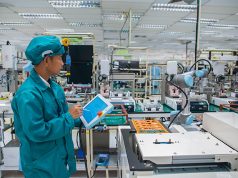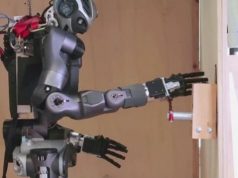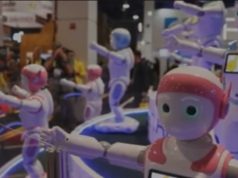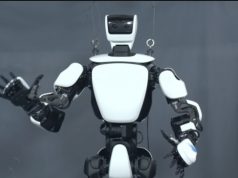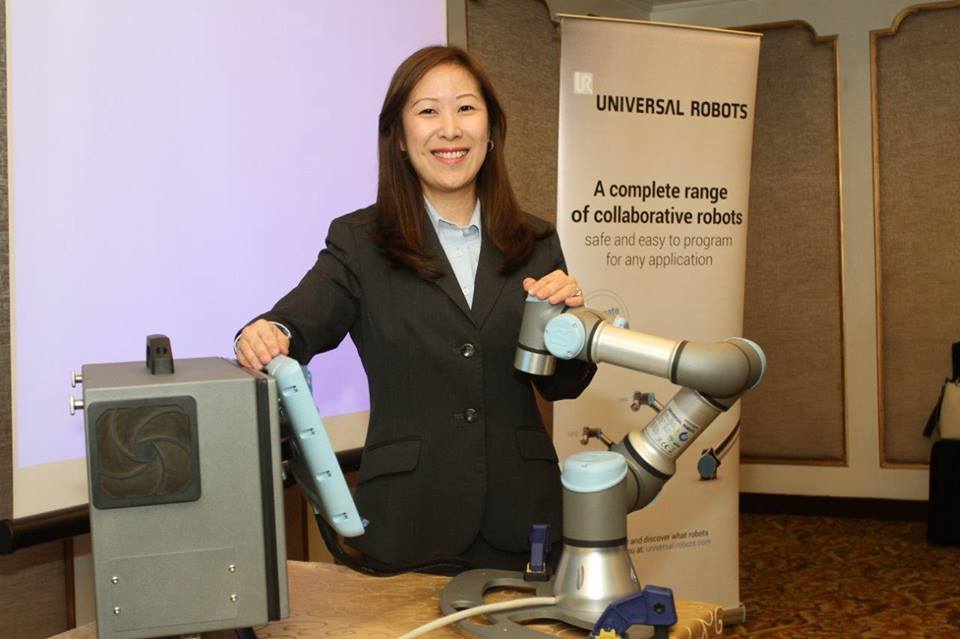
MANILA, PHILIPPINES — Demand for robots in Philippine industry is growing.
To meet the demand surge, Universal Robots, the world’s leading collaborative robotics company, forged a partnership recently with Asia Integrated Machine, Inc. (AIM), its second channel partner in the country. AIM is a premier provider of machinery and automation solutions for critical stages of the manufacturing process including quality control, packaging and warehousing.
“The Philippines is an important market for us, with strong adoption of UR collaborative robots (aka cobots) in the electronics, automotive and F&B industries that has surpassed our expectations,” said Shermine Gotfredsen, general manager, Southeast Asia and Oceania at Universal Robots, in a press briefing at the Dusit Hotel in Makati City. “But PH needs to seize automation opportunities now to stay competitive and avoid losing ground to its neighbours. We see further potential for the country even as it trails behind its regional counterparts in automation adoption.”
In 2016, the global robot density in the manufacturing sector was 74 units per 10,000 employees. Average robot density in Asia was 63 units.
The Philippines had 3 cobot units per 10,000 employees lagging behind ASEAN neighbours Singapore (488), Thailand (45), Malaysia (34) and Indonesia (5).
UR has three robot models to choose from depending on the operational scale of the client enterprise. Pricing starts at around 20,000 euros (P1.258M./$24,600)
GM Gotfredsen sees beyond her company’s bottomline and financial targets in encouraging local industry including SMEs to adopt cobots in their production line. Local companies are well advised to look at cobots as one-time investments and that the long-term benefits they eventually generate will far outweigh the initial outlay.
Gotfredsen further argued that automation can increase productivity and ensure consistent quality of the output thereby reducing raw materials wastage. A robotics system is also redeployable that opens more opportunities to engage in other applications on the factory floor.
For SMEs where production volume varies with every run, cobots offer the flexibility to be moved around the manufacturing area. These automated tools can be deployed wherever and whenever they are needed
Gotfredsen also said the labour reduction issue raised against automation may be a bit overblown.
She noted, “There are studies that say only 10% of jobs can be fully automated and that there is no risk at all of massive job replacement. On top of that, another research study shows that 2 million new jobs will be created in the next 4 years due to robotics and 50% productivity can be gained without any job loss.”
In the first place, technology advancement is about addressing challenges and making lives easier for people, she added.
Gotfredsen elaborated that with new technology, there will be new skills and functions that will be required to implement, maintain and support the innovation. This is where new jobs can be created.
The other fact is that automation can help the business remain sustainable so it’s not moved offshore. As the business becomes more competitive in the market, it grows in size where it will now need new employees who will be interacting with the new technology.
Gotfredsen is optimistic about the future of robotics adoption in Philippine industry.
“We have have been in the local market for only 1-1/2 years and the Philippines has exceeded our expectations. We project future growth in the local industry to align with the global adoption rate of 72% as of last year,” Gotfredsen said.
Asia Integrated Machine, Inc., UR’s second channel partner in the Philippines, is just as bullish.
“Our work with Top 500 companies in the country puts us in the best position to ensure current and potential UR end-users can integrate their UR cobots with cutting-edge tools to suit their specific business needs,” said
Albert W. Wang, AIM president. “We are confident this will also allow us to expand our customer base and support the automation requirements of firms in various sectors.”
Last year, the manufacturing sector accounted for 22 per cent of the Philippines’ 6.7 per cent GDP growth, which placed it among the fastest-growing economies in Asia, after China and Vietnam’s 6.9 per cent and 6.8 per cent GDP growth respectively. The sector also outpaced other parts of the region in manufacturing output with an 8.6 per cent growth rate in 2017.
The Department of Trade and Industry (DTI) has always recognized the importance of the manufacturing sector. In line with Industry 4.0, DTI introduced the Inclusive Innovation Industrial Strategy or i3S to sustain the sector’s robust growth. i3S includes training and upscaling of skills, developing or adapting available technologies and improving operational efficiency to meet global demands and opportunities
Investments by the government in the manufacturing sector have also increased almost three-fold, by 256 per cent, to P96 billion in 2017 from only P27 billion in 2015, affirming the importance of the sector. Through this initiative, several industries, particularly cement, sugar and petrochem, received government support in fiscal and non-fiscal incentives.





